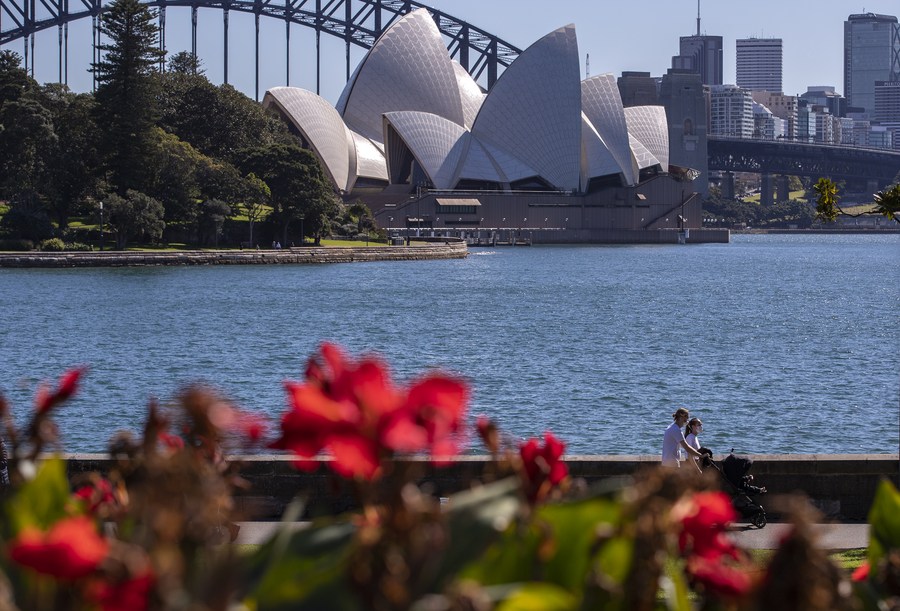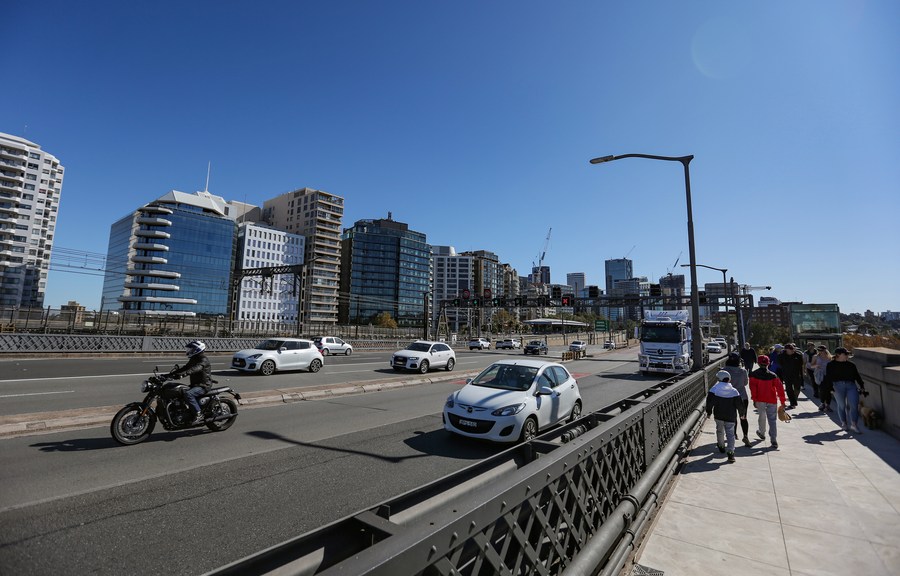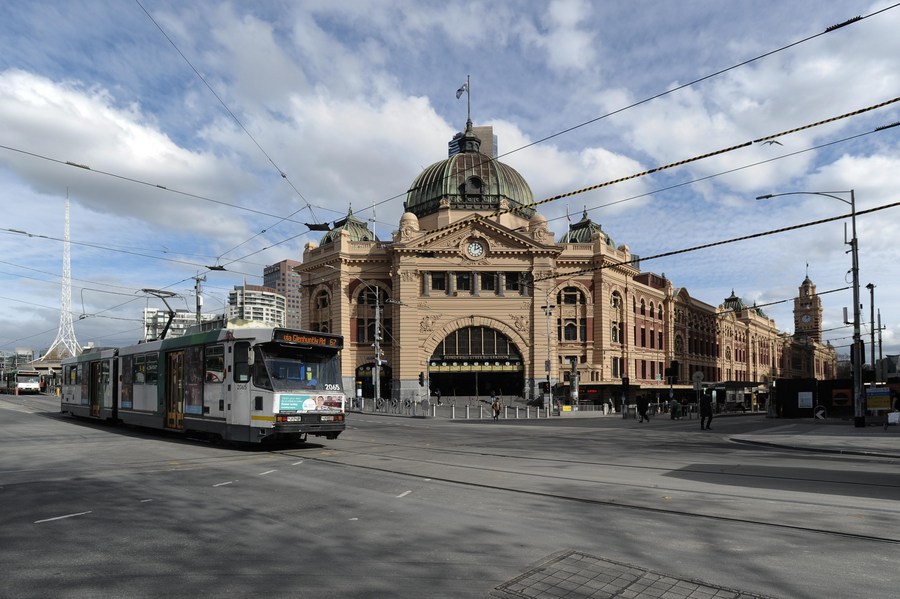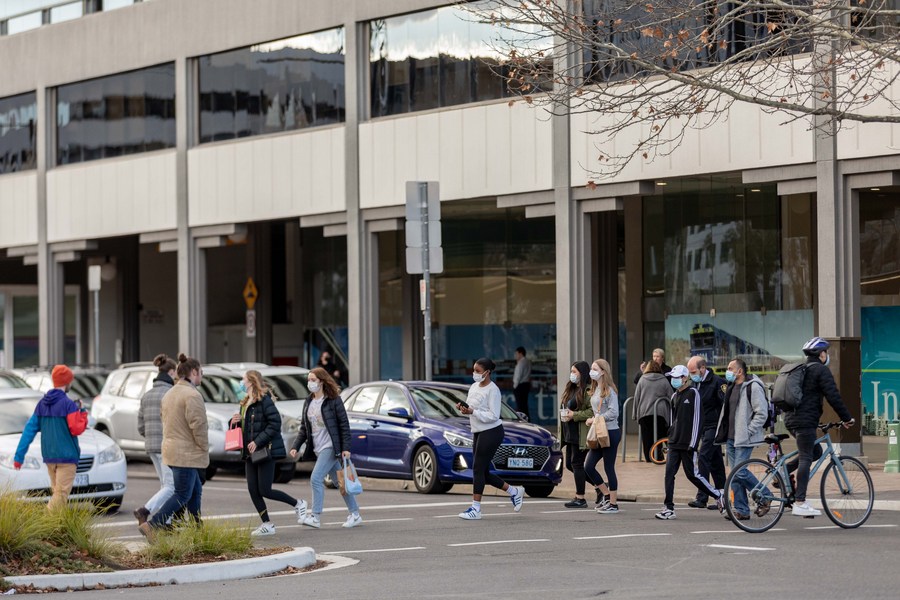
People walk near the Sydney Opera House in Sydney, Australia, on Aug. 16, 2021. (Xinhua/Bai Xuefei)
The Australian government has published its long-awaited Future Fuels and Vehicles Strategy to cut transport emissions by increasing the uptake of vehicles deploying new energy.
CANBERRA, Nov. 10 (Xinhua) -- The Australian government has published its long-awaited Future Fuels and Vehicles Strategy to cut transport emissions by increasing the uptake of vehicles deploying new energy.
The strategy, released by Prime Minister Scott Morrison and Minister for Industry, Energy and Emissions Reduction Angus Taylor on Tuesday, includes plans for a network of charging and hydrogen refuelling stations across the country.
It estimates there will be 1.7 million electric vehicles on Australian roads by 2030 with no subsidies, tax incentives or sales targets that would make them more affordable.
"Reducing the total cost of ownership through subsidies would not represent value for the taxpayer, particularly as industry is rapidly working through technological developments to make battery electric vehicles cheaper," the strategy said.

People and vehicles are seen on the street in Sydney, Australia, on May 10, 2020. (Xinhua/Bai Xuefei)
According to the government, the strategy will create 2,600 jobs and drive 500 million Australian dollars (371.2 million U.S. dollars) in combined public and private investment.
It will help reduce Australia's carbon emissions by more than 8 million tonnes by 2035.
The strategy said new charging infrastructure across 50,000 households, 400 businesses and 1,000 public fast-charging stations will be installed.
In the lead-up to the 2019 general election, Morrison criticized the Opposition Labor Party's electric vehicle plan, which included a sales target of 50 percent by 2030.

Photo taken on Aug. 3, 2020 shows a street in Melbourne, Australia. (Photo by Bai Xue/Xinhua)
Morrison said on Tuesday that his plan would avoid taxes and offer "taxes not mandates."
"Australians love their family sedan, farmers rely on their trusted ute and our economy counts on trucks and trains to deliver goods from coast to coast," he said in a statement.
"We will not be forcing Australians out of the car they want to drive or penalizing those who can least afford it through bans or taxes. Instead, the strategy will work to drive down the cost of low- and zero-emission vehicles, and enhance consumer choice.
"We will do this by creating the right environment for industry co-investment in technology development."

People wearing face masks walk across a street in Canberra, Australia, June 28, 2021. (Photo by Chu Chen/Xinhua)
However, the plan has been criticized by electric vehicle experts.
Behyad Jafari, the chief executive of the Electric Vehicle Council, said tax incentives, sales targets and subsidies, which were ignored by the new strategy, were the most important measures for encouraging electric vehicle uptake.
He told the Australian Broadcasting Corporation (ABC) that the strategy is an "improvement" on the government's previous policy, but that its lack of emissions standards for petrol cars would inhibit the uptake.
"If it contained fuel efficiency standards and rebates, it would give Australians more choice," Jafari said.
"Fuel efficiency standards are the absolute bare minimum of what you would expect in any 21st century plan." ■




